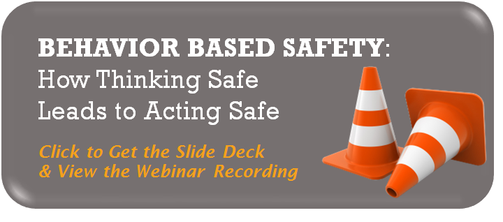BRIAN KRIMPELBEIN
Relationship Manager at HNI
You’ve probably been hearing the phrase “start with why” a lot lately in the business world. It comes from a book and TED talk of the same name by Simon Sinek. The idea is that your organization can’t reach its full potential unless everyone understands the reasons behind what you do — and buys into them.
Safety is a huge factor in many industries we work in - construction, manufacturing, transportation, and many others. Your employees know they need to work safely in these fields, but do they know the why?
Safety Has to Be Personal
The why of safety revealed itself in a sobering conversation I had recently.
I spoke with a claimant who had a 30-foot fall through a skylight. The claimant was the foreman on the job — the guy who was responsible for making the worksite safe. This fall has turned into a million-dollar issue.
The future of the company and all its employees are in jeopardy — all because $50 worth of fall-prevention equipment wasn’t set up.
The why of safety in roofing is at the heart of your profitability.
The Safety Basics Your Team Needs to Be Aware Of
Making sure your people understand the why of safety starts with transparency and speaking a common language. Here are three things that everyone in your organization should understand to really get the why:
1. What Experience Modification Means.
Everyone at your firm should know what a Workers Compensation Experience Mod is.
They need to understand how it affects the profitability and insurability of your organization.
For laypeople, tell them it’s a measure of your losses, which indicates claims activity. The lower the Mod, the better. A low Mod demonstrates that you have few losses, which implies safe behavior. Safe behavior makes your organization a more attractive risk to general contractors, building owners, and insurance companies.
When they understand what the Mod means to them, they will help protect it. The No. 1 person to turn in someone for committing workers compensation fraud is a co-worker who understands how this bad actor is affecting their company.
Related Post: 10 Red Flags for Employee Work Injury Compensation Fraud
2. What Goes Into a Competitive Bid.
Everyone at your firm should know what goes into a bid. I
t’s pretty basic: material costs, labor costs, and profit. There’s probably not a lot you can do to drop the material cost, so let’s focus on labor costs and profit.
What goes into labor? Wages, benefits, insurance, etc. If the job is going to sell for $100,000, and your material costs are similar to our competition, where can you make the difference? If your insurance costs are high, there’s a good chance your profits are low.
3. How Pre-Loss and Post-Loss Fit Together.
Your people need to understand what happens before a claim and what happens after a claim.
Before a claim, you work on best safety practices and lay out consequences for unsafe behavior. After a claim, you figure out what went wrong, amend your best practices if necessary, and execute the consequences.
It’s very important to have a clear and consistent message pre- and post-loss. If you hire for safety, your people will get this really fast. (We’ll get to that in a minute.)
When you lift the veil on these safety elements, there’s greater alignment of your talent. They understand where you stand — and what your next safety steps should be, because you’re working toward a shared goal: increased profitability.
Safety as a Cornerstone of Your Organization
Safety never should be a priority at your organization. Priorities change, but values never do. Safety should be a value — beyond compromise and a matter of fact when it comes to how you do business.
Hire talented employees who value safety, and your organization will benefit. That’s how safety becomes everyone’s M.O. You can avoid hiring your next claim by hiring for the value of safety.
Safety programs can be frustrating for business leaders. You don’t know when a safety program is working, but you sure as heck know when your program has failed.
Share the why of safety with your employees, and discover the financial benefits of leveraging this powerful value.
Related Posts:
How Workers' Compensation Subrogation Works
The Ins and Outs of Fitness for Duty Exams
How Physical Abilities Testing Can Stop Your Next Work Comp Claim
3 Reasons You Need Work Comp Even If You Provide Health Insurance
How Employers Can Break Through Work Comp Claim Dysfunction
.png?width=69&height=53&name=Acrisure%20Logo%20(White%20Horizontal).png)


